How to Identify the 5 Most Common Weeds in Pittsburgh
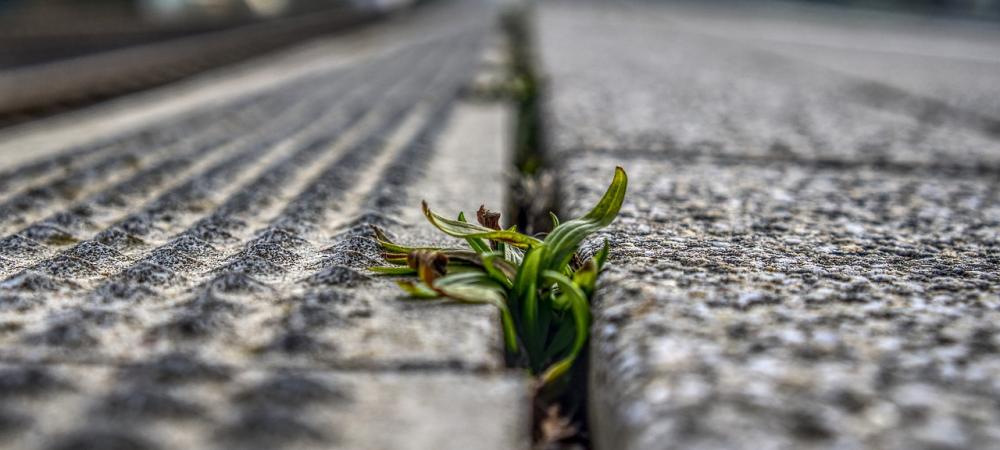
A healthy lawn enhances curb appeal and provides a great outdoor space for you to enjoy. However, Pittsburgh homeowners often battle stubborn weeds that can quickly overtake their yards. Understanding what weeds you’re dealing with is the first step in effective control. Below, we’ll cover the most common weeds in the area, how to identify them, when they emerge, what conditions help them thrive, and how to get rid of them.
1. Dandelion (Taraxacum officinale)
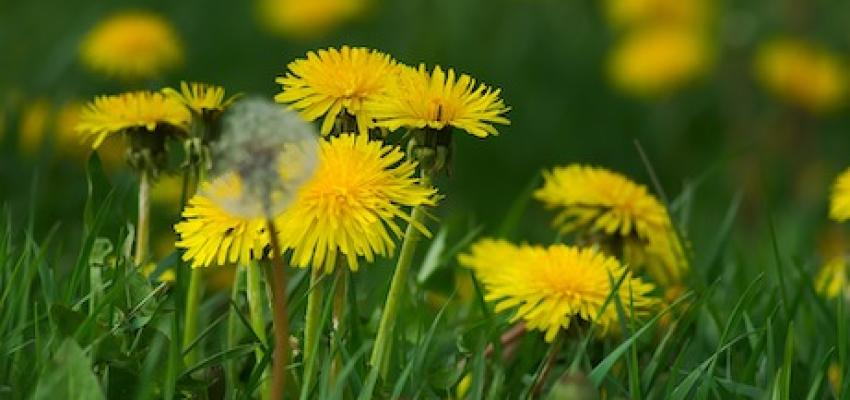
How to Identify Dandelion
Dandelions are one of the most easily recognizable weeds due to their bright yellow flowers that later develop into white, fluffy seed heads.
- Their leaves are deeply lobed and jagged and form a low-growing rosette that can spread quickly. The leaves have a slightly wavy or tooth-like appearance, giving them a distinct, saw-edged look.
- The plant produces a long, thick taproot that burrows deep into the soil, making it difficult to remove by simply pulling it out. If even a small piece of the root remains in the ground, the plant can regenerate.
- The flowers open in the morning and close in the evening, and once the seed heads form, the wind can carry the seeds over long distances, helping them spread rapidly across your lawn.
Ideal Growth Conditions for Dandelion
- Dandelions typically emerge in early spring and persist through the fall.
- They thrive in weak, thin turf and compacted soil where they can easily take hold and outcompete the grass.
How to Control Dandelion
- To control dandelions, hand-pulling is effective when the soil is moist, as this allows you to remove the entire taproot.
- Applying a selective broadleaf herbicide in early fall is also recommended, as this is when dandelions store nutrients in their roots, making the treatment more effective.
- Maintaining a thick, well-fertilized lawn can also help prevent dandelions from taking over.
2. Crabgrass (Digitaria spp.)
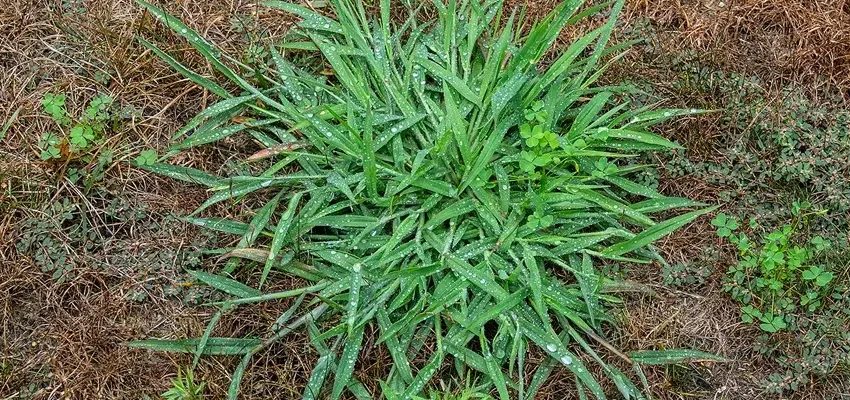
How to Identify Crabgrass
Crabgrass is an annual grassy weed that spreads quickly and aggressively. It has a light green color, which often contrasts sharply against darker turfgrass.
- The plant grows in clumps and features thick, sprawling stems that extend outward, resembling the legs of a crab.
- The stems often appear flattened and can root at nodes where they touch the soil, allowing the weed to spread rapidly.
- The seed heads form in late summer, appearing as long, finger-like spikes that extend upward.
Ideal Growth Conditions for Crabgrass
- Crabgrass germinates in late spring when soil temperatures rise above 55°F.
- It prefers compacted, nutrient-poor soil and thrives in areas that receive full sun.
- You’ll often find it invading thin or patchy areas of the lawn where grass is struggling to grow.
How to Control Crabgrass
- To control crabgrass, applying a pre-emergent herbicide in early spring is essential, as this prevents the seeds from germinating.
- Keeping your lawn thick and well-fertilized will also help choke out crabgrass.
- Mowing at a higher setting (three inches or more) can shade out emerging seedlings and prevent them from establishing.
3. Clover (Trifolium repens)
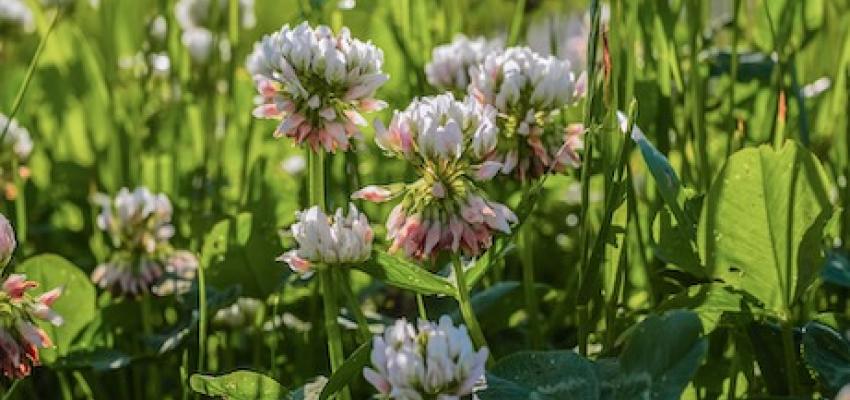
How to Identify Clover
Clover is a low-growing, creeping perennial weed that can quickly spread across your lawn.
- It has small, round leaves that typically grow in groups of three, though an occasional four-leaf clover can be found. The leaves are bright green and often have a faint white crescent marking.
- In the spring and summer, clover produces small, white or pinkish flowers that grow in clusters and attract bees.
- The plant spreads through creeping stolons that root at the nodes, allowing it to form dense mats.
Ideal Growth Conditions for Clover
- Clover thrives in lawns with low nitrogen levels.
- Thrives in compacted soil and areas with moderate to full sun.
- It is particularly common in areas where grass struggles to grow due to poor soil quality.
How to Control Clover
- To control clover, improving soil health by applying nitrogen-rich fertilizer can help grass outcompete it.
- Hand-pulling is effective for small patches, but for larger infestations, a broadleaf herbicide may be necessary.
4. Ground Ivy (Glechoma hederacea) (Creeping Charlie)
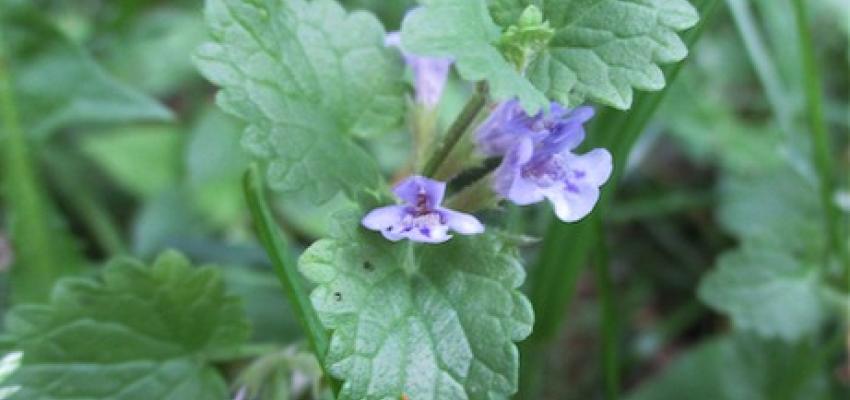
Ground ivy, commonly known as Creeping Charlie, is a fast-spreading, low-growing perennial weed.
- It has scalloped, round green leaves that resemble small fans and often emit a strong mint-like scent when crushed.
- This weed produces small, trumpet-shaped purple flowers in the spring, which add to its distinct appearance.
- Ground ivy spreads aggressively through creeping stems called stolons, which root at each node and quickly take over weak areas of the lawn.
How to Identify Ground Ivy
- This weed thrives in moist, shady areas with poor soil drainage, making it a common nuisance in lawns with excess moisture or heavy shade.
- It typically becomes more prominent in early spring and fall.
How to Control Ground Ivy
- Controlling ground ivy requires improving drainage and increasing sunlight exposure in affected areas.
- Persistent hand-pulling is necessary to remove the creeping stems, but for larger infestations, a selective herbicide targeting broadleaf weeds is the most effective option.
5. Plantain (Plantago major & Plantago lanceolata)
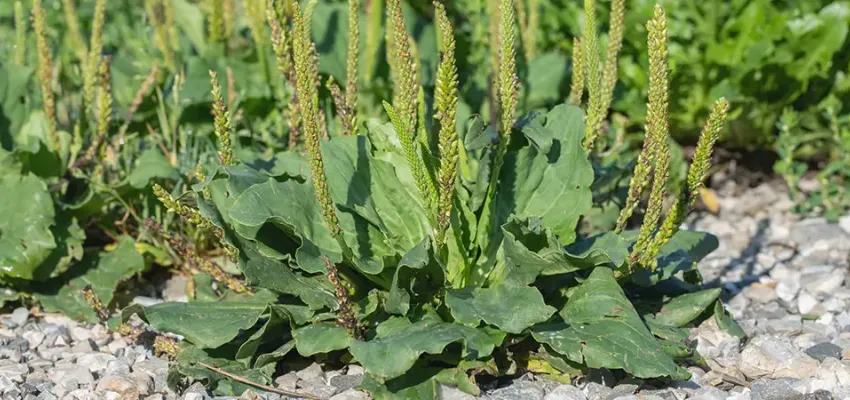
How to Identify Plantain
Broadleaf plantain and buckhorn plantain are common weeds found in Pittsburgh lawns.
- Broadleaf plantain has large, oval-shaped, dark green leaves with prominent parallel veins (pictured above).
- Buckhorn plantain has narrow, lance-shaped leaves with a similar vein pattern.
- Both types produce tall stalks topped with small flowers that eventually turn into seed heads.
Ideal Growth Conditions for Plantain
- Plantains are often found in compacted soil, making them a frequent sight along driveways, sidewalks, and other high-traffic areas.
- They typically emerge in early spring and persist through fall.
How to Control Plantain
- The best way to control plantain is by aerating the soil to reduce compaction.
- Applying a broadleaf herbicide in early fall is also effective.
- To help keep out the weed, make sure to maintain a thick, healthy lawn through proper fertilization and mowing.
Final Tips for a Weed-Free Lawn
Maintaining a healthy lawn is the best defense against weeds:
- Maintain proper lawn height – Mow at the recommended height for your grass type to reduce weed invasion.
- Water deeply but infrequently – This promotes strong root growth, making your lawn more resilient.
- Apply pre-emergent herbicides – Prevents weed seeds from germinating, especially for crabgrass and dandelions.
- Fertilize regularly – A well-fed lawn outcompetes weeds for space and nutrients.
- Aerate and overseed – Helps reduce compaction and fills in thin areas with desirable grass.
By staying proactive and maintaining a healthy lawn, Pittsburgh homeowners can keep these common weeds under control and enjoy a lush, green yard all season long!
If you have any questions or concerns or are looking for professional weed control to help keep your lawn weed-free all summer long, don't hesitate to contact our team of local lawn care experts!
Check Out Our Other Articles: